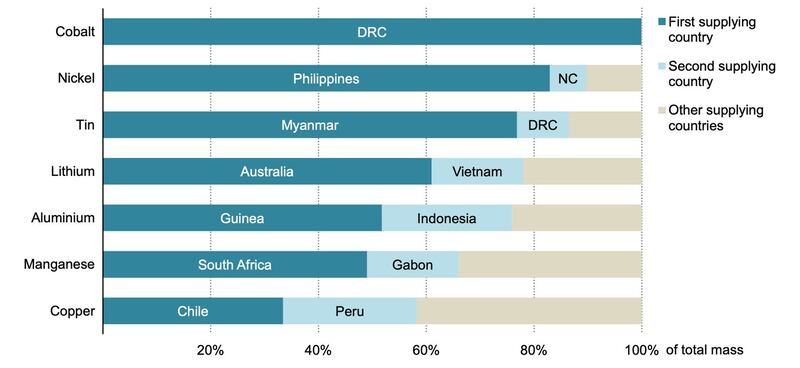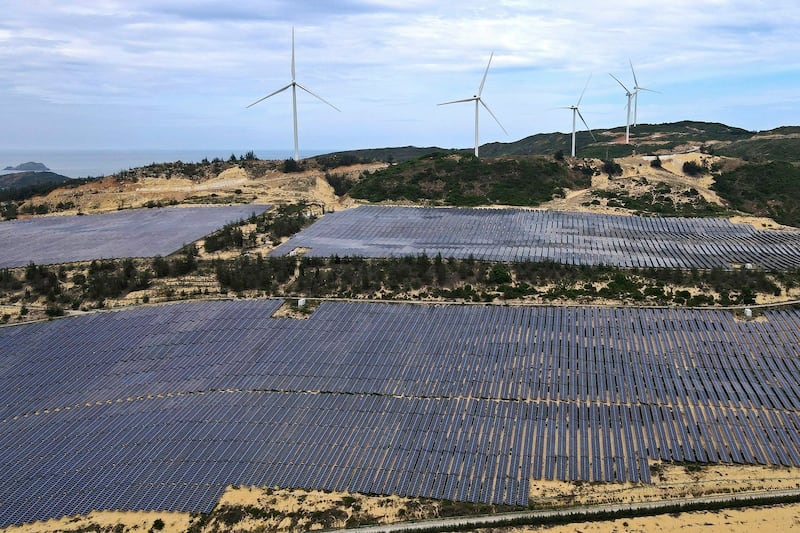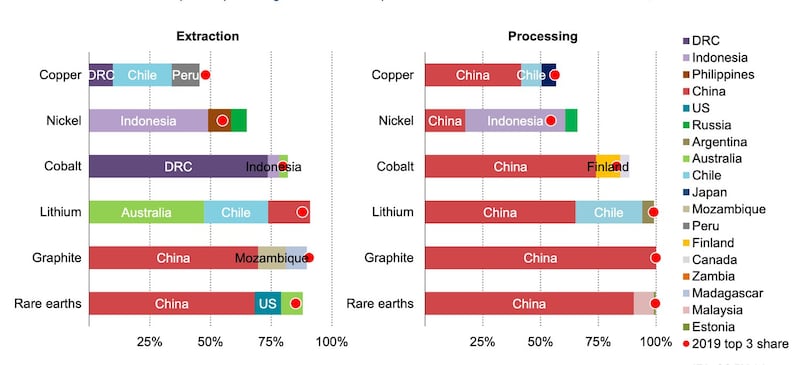The critical minerals market essential for clean energy technologies has doubled over the past five years, with China leading worldwide investment spending, a new report by a global energy watchdog said Tuesday.
Between 2017 and 2022, the energy sector was the main factor behind a tripling in overall demand for lithium, with a 70% jump in demand for cobalt, and a 40% rise in demand for nickel, the International Energy Agency said in its first annual Critical Minerals Market Review.
The market for energy transition minerals reached U.S.$320 billion in 2022 and is set for continued rapid growth, moving it increasingly to center stage for the global mining industry, the report said.
Clean energy tech is propelling record deployments for critical minerals, including lithium, cobalt, nickel, copper and rare earth elements. They help power electric vehicles, wind turbines, solar panels and other technologies key to the clean energy transition.

The report said that investment in critical minerals development recorded a sharp uptick of 30% in 2022 – following a 20% increase in 2021 – with companies based in China nearly doubling their investment spending in 2022.
The global shift towards clean energy technologies is driving a rapid increase in demand for such minerals, with global consumption of these transition minerals projected to grow six-fold by 2040.
China has emerged as a significant player in recent years due to its dominance over the processing and refining of key minerals necessary for renewable energy.
Due to a blend of incentives and regulatory policies, China is also ahead in manufacturing clean energy technologies, such as solar panels, wind turbines and electric vehicle (EV) batteries. It hosts about 50% of the world’s operational wind and solar capacity.

Chinese companies have been acquiring overseas mines and investing in mineral-rich countries to secure the sourcing of transition minerals to meet their rising demand.
The report said Chinese companies invested $4.3 billion between 2018 and the first half of 2021 to acquire lithium assets, twice the amount invested by American, Australian and Canadian companies combined.
Despite growth, major issues remain
Though the critical or transition minerals industry is witnessing a rapid surge in demand, opening up new avenues for growth, the Paris-based energy agency said that more work is needed to ensure diversified and sustainable supplies to support the transition.
“At a pivotal moment for clean energy transitions worldwide, we are encouraged by the rapid growth in the market for critical minerals, which are crucial for the world to achieve its energy and climate goals,” said International Energy Agency Executive Director Fatih Birol.
“Even so, major challenges remain. Much more needs to be done to ensure supply chains for critical minerals are secure and sustainable.”
The agency’s analysis found that if all planned critical mineral projects worldwide are realized, supply could be sufficient to support the national climate action pledges announced by the governments.
However, a combination of challenges, including volatile price fluctuations, supply chain constraints, and geopolitical uncertainties, have created a complex set of obstacles to overcome, posing significant risks to secure and swift energy transitions, the group said.
Lack of industry-wide progress, especially in environmental sustainability, means greenhouse gas emissions remain at high levels, with roughly the same amount being emitted per metric ton of mineral output every year, the report said.
Similarly, water withdrawals almost doubled from 2018 to 2021, while waste generation oscillated around 5 gigatons, with 2021 intensities slightly above 2018 levels.
Diversity of raw supply also remains a concern, with many new project announcements coming from already dominant players.

The report said the share of the top three producers in 2022 either remains unchanged or has increased further, especially for nickel and cobalt, with China and Indonesia leading the way.
While the projects in the pipeline indicate “a somewhat improved picture for mining,” the geographical concentration for refining operations is greater, with China holding half of planned lithium chemical plants and Indonesia representing nearly 90% of planned nickel refining facilities, the report said.
China has established itself as the world’s largest metal refining hub in the past few decades. However, it heavily relies on imports for large volumes of raw materials, often from a few sources; for example, China depends almost entirely on the Democratic Republic of the Congo for mined cobalt.
Edited by Mike Firn.
